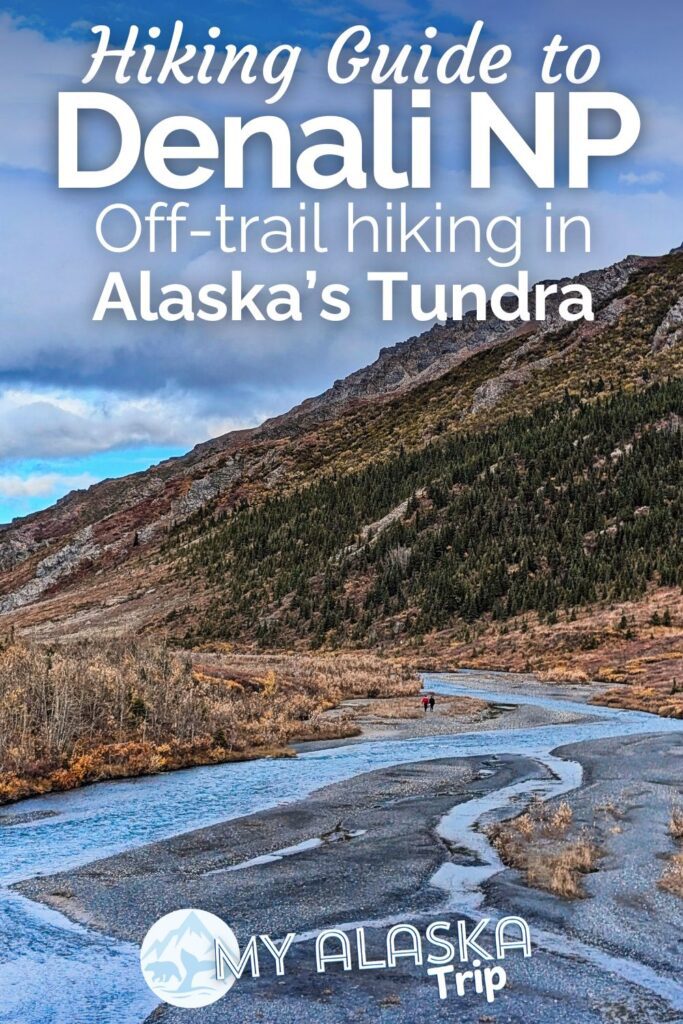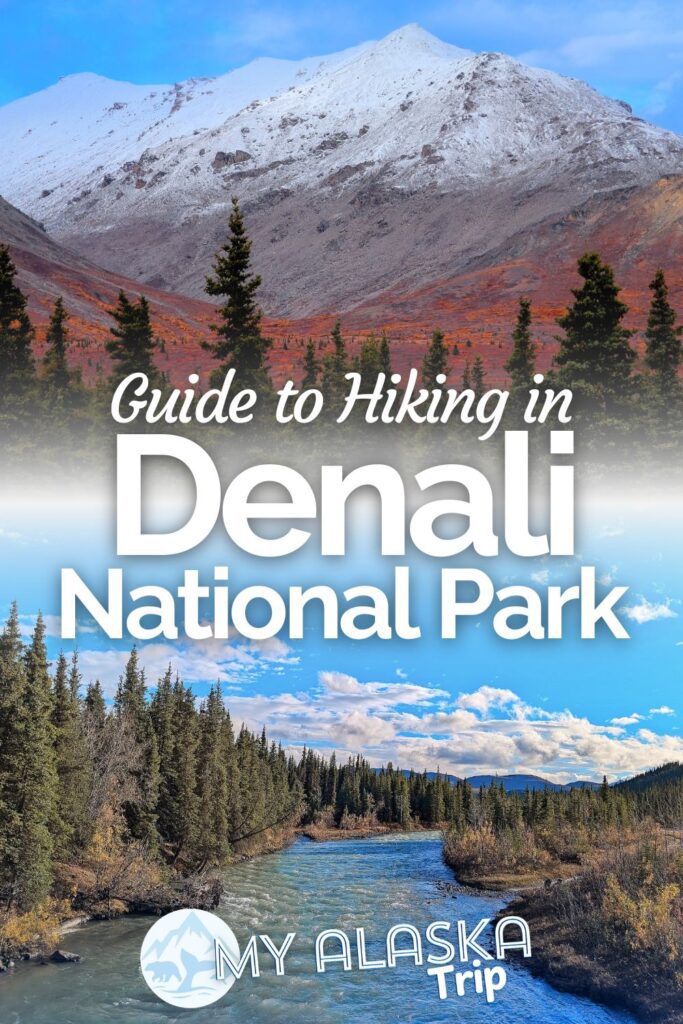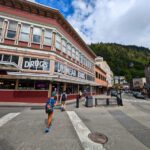Something surprising and amazing about Denali National Park is the opportunity for off-trail hiking. I shared a video of myself tromping through the tundra with care and people were so confused, so I thought I should share just what off-trail tundra hiking is and how to do it safely and with care when you visit Denali National Park. It’s a very special way to explore and you’ll love the experience.
“So, what is off-trail hiking?” “In a National Park? Off-trail? That’s breaking the rules.” I will answer these questions and address that last statement right now:
- Off-trail hiking is the primary way to explore the tundra in Denali National Park and is recommended by the Park management as the best way to experience this vast National Park.
- And what is it? It’s exactly as it sounds – hiking without a trail just like you do when you run through a field or go bushwhacking through the forest. You proceed with caution and care.
Now that we’ve got that out of the way, here is more information about off-trail hiking in Denali National Park, including my top picks for where to do it and tips for staying safe. You will enjoy this sort of adventure and hopefully it’ll help you see our National Parks in a different light (or at least the work that goes into making them human-friendly).
If you have any questions about off-trail hiking, visiting Denali NP, or need some tips for planning an Alaska road trip, please leave a comment or send us a note. We’re always happy to provide more information and help others plan amazing experiences.
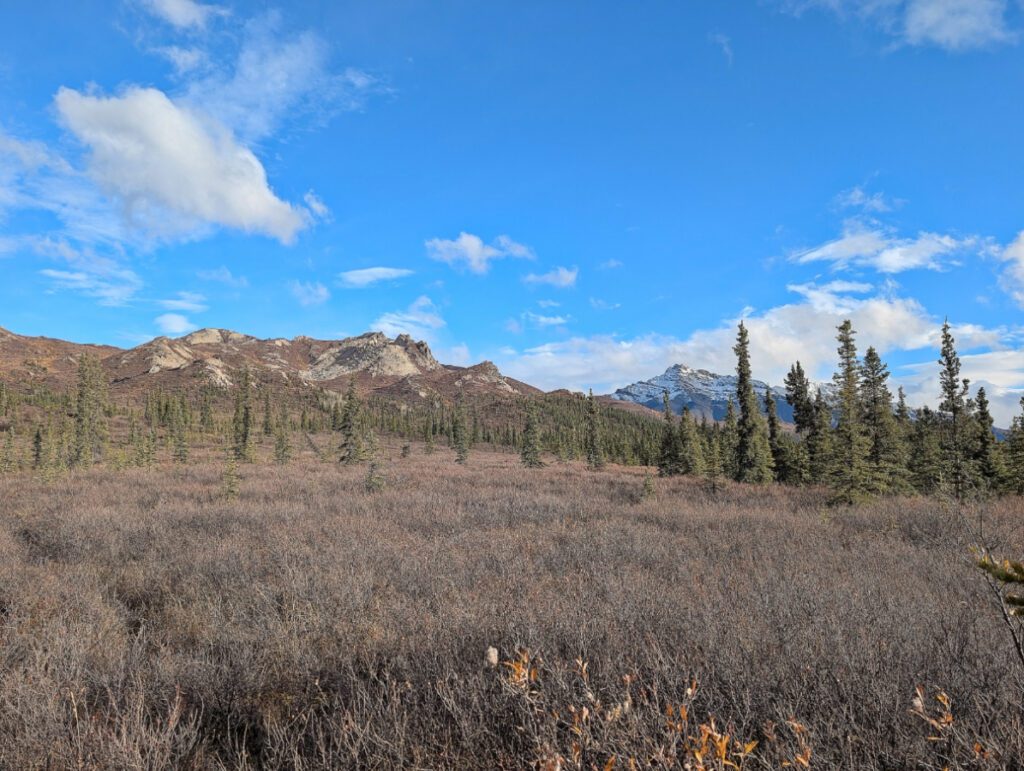
Why Go Off-Trail Hiking in Denali
Most people coming to Denali National Park are doing either the Denali Natural History Tour or the Tundra Wilderness tour on a bus. This is a great way to see the park and watch for wildlife, but you’re stuck on somebody else’s timeline and route. Hiking in areas without established trails in the vast tundra and mountainous regions of Denali is what you get when you go off-trail hiking.
With this sort of Denali NP hiking you get to experience solitude, exploring unique landscapes and up-close wildlife encounters. I don’t mean that this is how you’ll get your epic moose selfie, because that is unsafe but it means that since you’re going on your own away from where most of the humans are, the wildlife are more at ease and roam freely. You can follow the streams and rivers where you want to go and let your intuition guide you.
The hesitation most people have about going off-trail hiking in Denali NP are due to the basics of navigation, exposure to weather, uncertain terrain, wildlife encounters and potential risks. Being prepared and conservative in your tundra hiking plans is the best way to overcome those obstacles. We’ve got great tips for planning unforgettable days of off-trail hiking through the park.
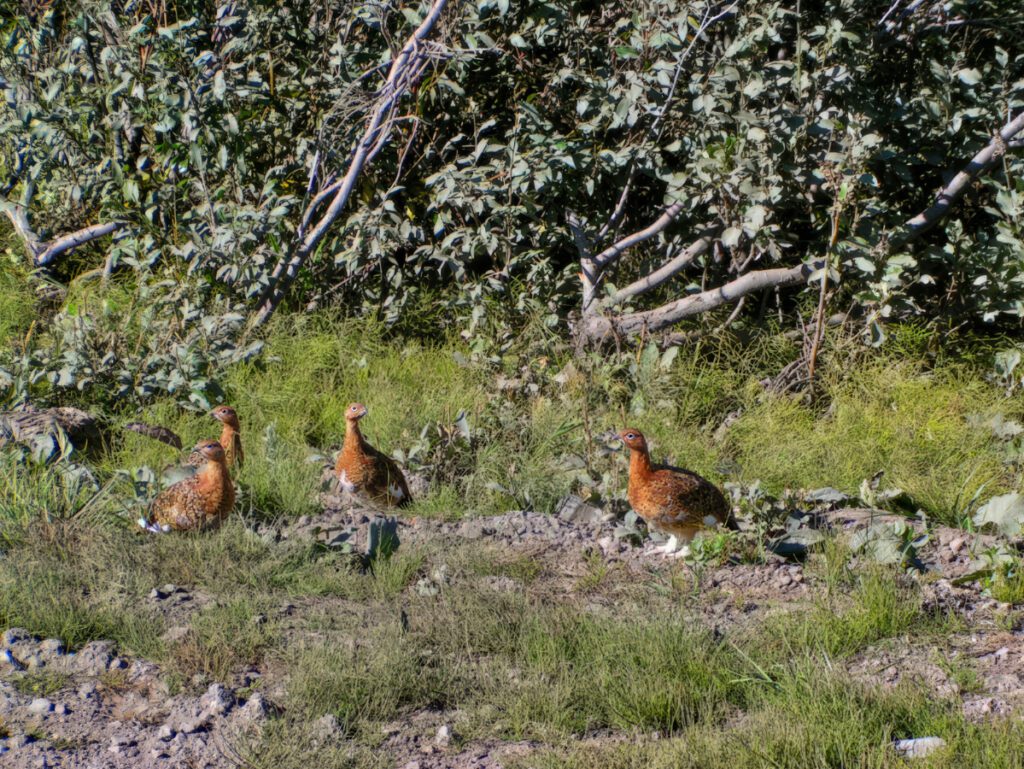
Preparing for Tundra Hiking
While the though of hiking on your own, not on a trail might seem daunting because you don’t know what the path will be like, you get to be flexible to go where you feel is best for your outdoor skills and fitness levels. Like when we went bushwhacking in Southeast Alaska when we did a UnCruise sailing from Juneau, each time we would set out into the woods our path was dependent on how we were feeling and the conditions of the ground we came across. We knew this would be a challenge, so we were prepared in advance, and that’s also how you can successfully go tundra hiking in Denali.
You probably will be planning your trip into Denali National Park a bit in advance so you have a little time for conditioning for hiking in uneven, potentially boggy tundra and steep terrain. That doesn’t mean you need to get in shape for a marathon, but just that you need to get your body used to being active and agile. Before you set out across the tundra on your own or with a group, just make sure that you are confident with how much stamina you have. It’s helpful to be fit.
Using topographic maps, GPS devices, and understanding natural landmarks for navigation are all helpful skills for off-trail hiking in Denali. There are different approaches you can take to planning your routes (we’ll get into that below), but being familiar with map basics is very helpful. I am really fortunate in that I have a map built into my brain and I just naturally can track myself in the wilderness, but that’s not the case for most people. Familiarize yourself with reading maps on your phone before heading out for tundra hiking.
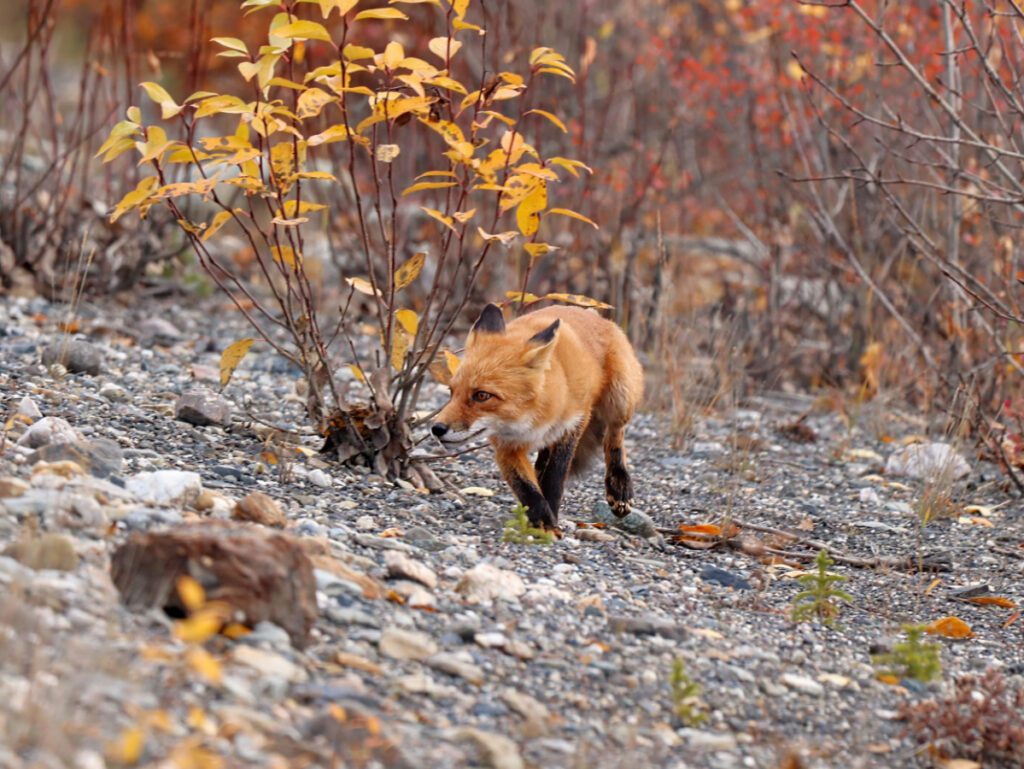
Gear for Off-Trail Hiking in the Tundra
Navigation Tools such as maps, compass or GPS are very important for off-trail hiking in Denali National Park. If you’re keeping it simple and only doing short tundra hiking spurts, then they aren’t as important, especially if you’re keeping the park road in view, but if you are planning on covering more than a mile of territory, navigation tools are very important. For me, offline maps are THE KEY TO SUCCESS and I highly recommend them with topographic lines turned on.
Tip for Offline Maps: when you select your offline map area, be sure to cover where you’re planning to hike PLUS MORE. For Denali National Park I have the everything withing a few miles of the Park Road plus the whole town area outside the park.
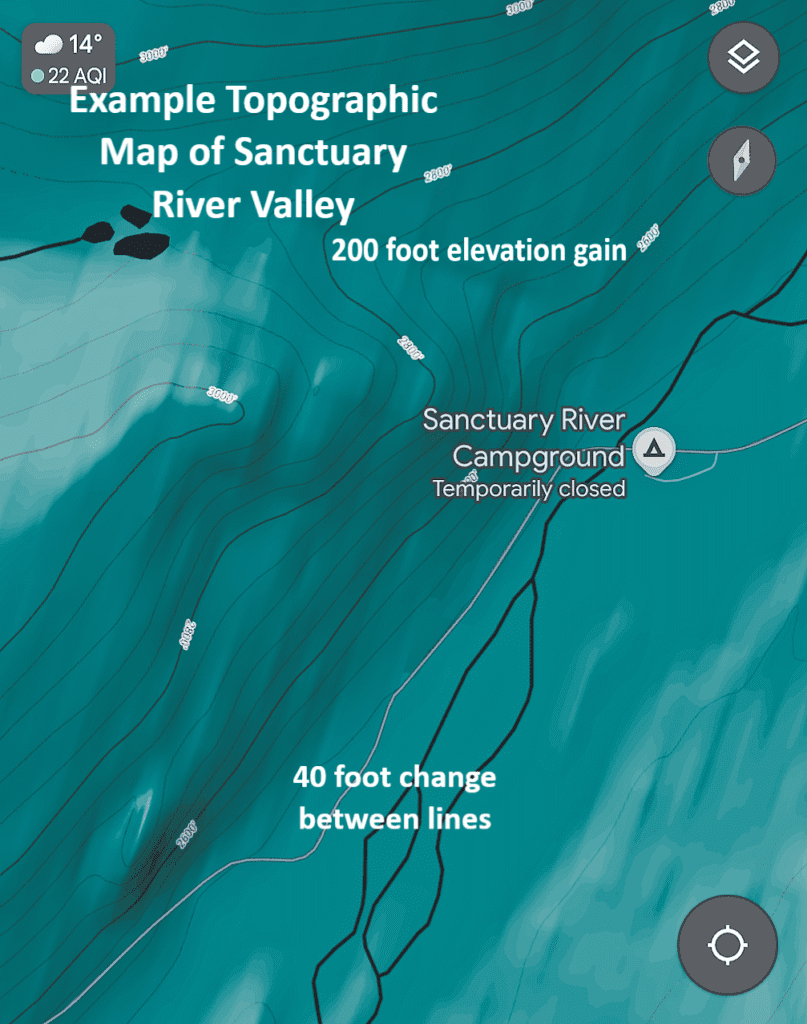
Layered clothing is very important when you’re prepping for off-trail hiking in Denali NP. For variable weather, because it changes often, waterproof outer layers and sturdy hiking boots suitable for tundra and rocky surfaces are needed. Most of the tundra hiking in Denali is going to be sloped areas that you think won’t be too wet, but the boggy nature of the tundra and permafrost will surprise you. For layers, this is helpful both to keep warm and dry AND to prevent mosquito issues.
I’m all about safety gear when we’re tundra hiking. This is different for everyone based on skill level and outdoors knowledge, but the basics are to bring the following: b
- bear spray / bear horn – know how to use it first Check out our article here!
- hiking first-aid kit – not just band-aids, but actual wound care items
- trekking poles – yes, these are helpful for many reason, including if you encounter wildlife
- emergency shelter – just in case, it’s good to have a small tent, emergency blankets and even a sleeping bag
- and a satellite communication device if possible – a Garmin inReach is very good and ideal
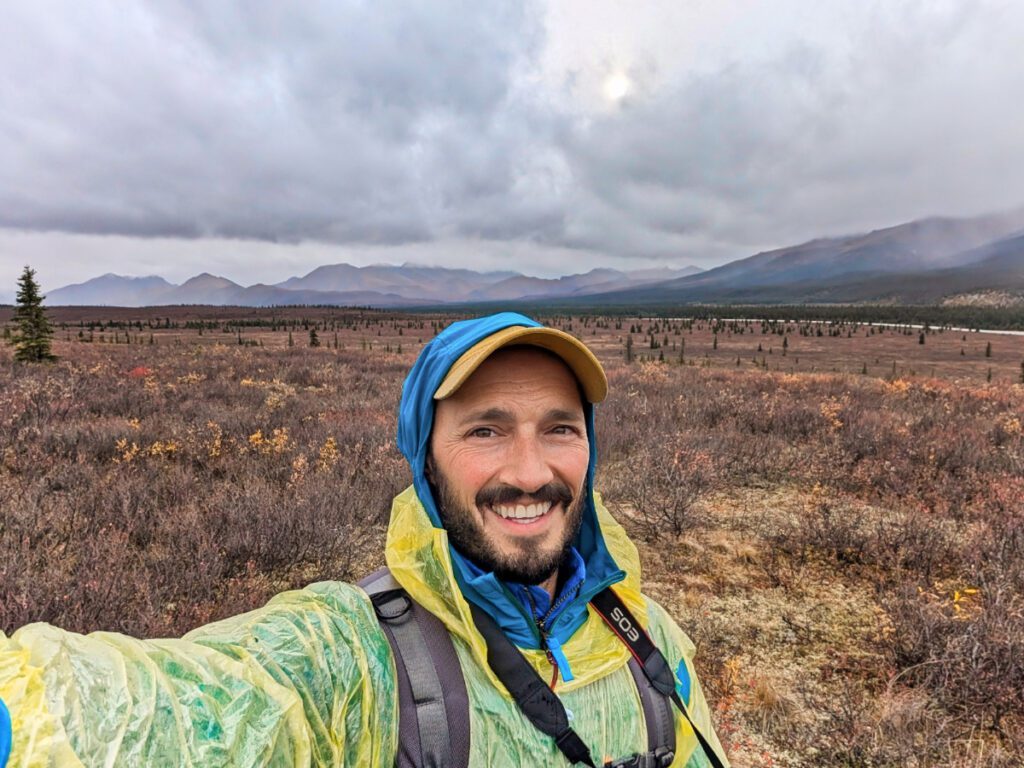
Where to go Tundra Hiking in Denali NP
This is why you’re here! So where should you go tundra hiking in Denali National Park? I’m excited to talk about this and I think you’ll love the options. Remember, just because I haven’t included an area in my recommendations doesn’t mean it’s not amazing. Also, keep in mind that sometimes parts of the park will be closed to off-trail hiking due to wildlife activity, such as aggressive bears or the moose rut.
NOTE: the Denali Park Road will be closed from mile 43 of the 92 mile road until most likely 2026. The Pretty Rocks Landslide is fascinating and the engineering behind the new bridge system is awesome, so stay tuned for opening date information.
Top Denali National Park Areas to Explore
Before I share my top picks for tundra hiking in Denali NP, remember that you need to secure your transportation into the park. You can only drive yourself as far at the Savage River for most of the year, with only a week or two of access as far as Teklanika. That means that you need to buy a bus ticket on the Denali Park Transit Buses. These buses allow you to get off all along the route and catch another bus as it passes heading in the direction you want to go (depending on seating availability).
Off-Trail Hiking in Denali YOU Can Drive To
Visitors can drive themselves as far at Mile 15, to the Savage River ranger checkpoint. There are lots of places to pull off to explore on your own as well as a few maintained trails. These areas are less likely to have wildlife readily in the area due to the easy access for visitors, but that’s why you’re hiking off-trail beyond the maintained areas.
- Mile 7 – there are pull-offs in the area and lots of wildlife. You can self-drive here and park safely; hike up the hills or down the valley
- Mountain Vista – there is a parking area and you can self-drive to here. This is one of the only maintained trails and then you can continue beyond it. I LOVE off-trail hiking from the end of the Mountain Vista trail.
- Savage River – this is one more maintained trail that you can go beyond. The actual trail is 2 miles round trip, but you can continue either way up the Savage River valley.
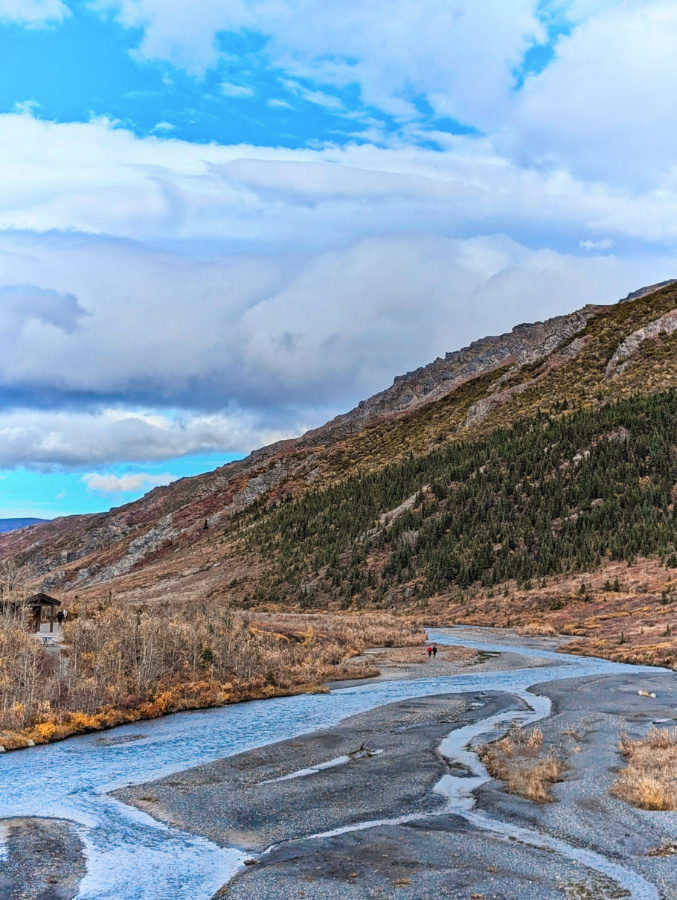
Off-Trail Hiking from the Denali Transit Bus
Here are MY top picks for where to do your own tundra hiking in Denali. There are not structured trails in these areas, but there are points of interest and beautiful sights along the way, listed in order from beyond Savage River to Wonder Lake. The first set of recommendations are accessible from the Denali Transit Bus and via personal vehicle during the weeks of the year when cars are allowed.
- Inspiration Point – this is a common stop and great launch for off-trail hiking with a view of Denali to the west
- Mile 17 – this is an area of taiga forest and bog, but it’s fun to explore and is a great place for seeing hawk owls and bears
- Sanctuary River – get out at the campground and head up river to get away from the Park Road
- Mile 24 – head down the embankment to the Teklanika River or up the hill to get a view of Denali and perhaps see moose or caribou
- Teklanika Campground / Lookout – from here you can head east through the taiga forest into some beautiful stretches. It’s boggy but easy to navigate across and back to the road. If you head down to the river, you can easily follow the river in either direction.
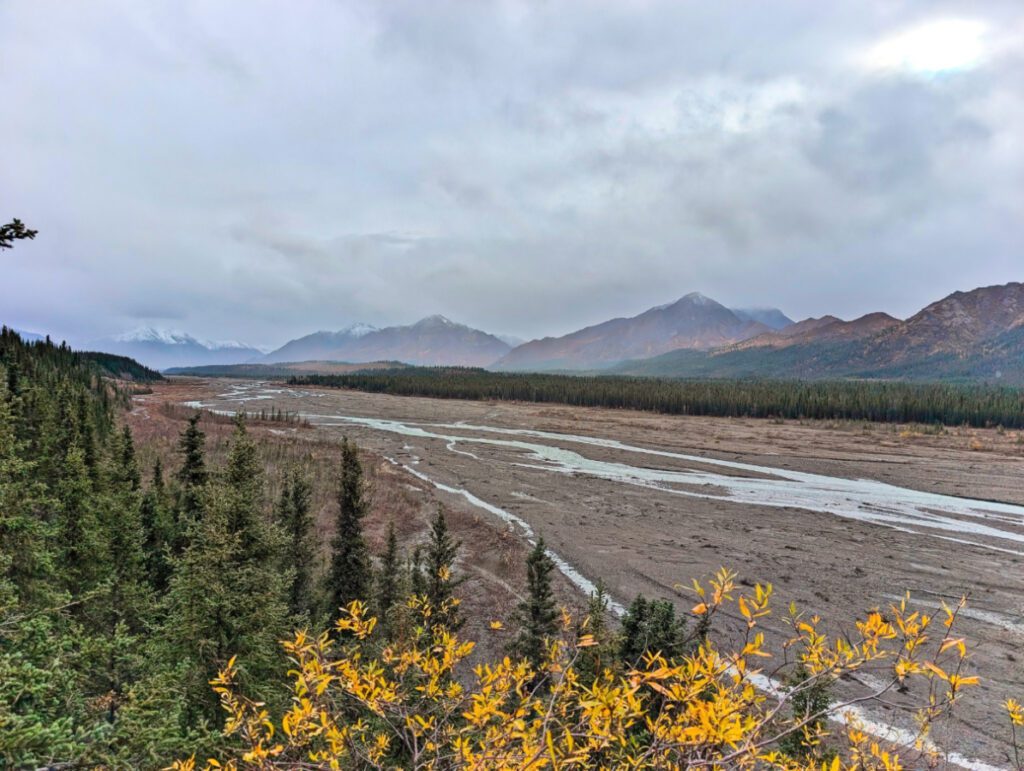
The next series of recommended hiking areas are ONLY accessible by the Denali Transit Bus, and most of them are located beyond the current Pretty Rocks road closure.
- Ghiglione Bridge – there’s a good stop after that’s great for hiking up the ridge and over
- Anywhere leading to Polychrome Pass – this is the part of the park where I’ve seen the most caribou and bears. I love this area for exploring off-trail.
- Toklat River – getting down to the river is a good way to easily navigate for off-trail hiking in Denali. There are lots of steep hills around though, so the area can be a challenge depending on your route
- Mile 56 – this is a solid area of tundra, perfect for hiking. The terrain is less rough and is great for birding.
- Stoney Hill – I think this is the MOST iconic area of tundra in Denali National Park. On a clear day the view of Denali is incredible, there tend to be caribou, and you’ll have the most picturesque off-trail tundra hiking here
- Eielson Visitor Center – while there are a lot of people heading out for tundra hiking here and onto the maintained trails, it’s a wonderful place to explore
From Eielson to Wonder Lake, the Denali Transit Bus driver will let you know where you can and cannot be dropped off. There are restrictions in place for where the buses can stop, but the drivers will know best about current rules and best areas for tundra hiking here.

How to Plan an Off-trail Hiking Route
If it’s important to you to plan your off-trail hiking route, you’ll want to really look at a terrain / topographic map of Denali National Park. You’ll be able to see the quick changes in elevation and how broad the river valleys are. You can also use a simplified map or the actual park map you can get at the visitor center. Route planning for tundra hiking isn’t typically needed unless you’re also planning to be gone for several days, but then you’re venturing into backcountry camping, which we’re NOT talking about here.
Ideally, when you’re off-trail hiking in Denali National Park, you’ll be staying within a few miles of the Park Road. When you’re hiking in the tundra, the road tends to stay within your visibility. Once you start crossing ridges, that’s when you will need to keep an eye on your OFFLINE MAP to be able to successfully get back to the road.
Plan your off-trail hiking to stay within eye-shot of the Park Road or along a river valley, keeping the river in view for easy navigation back. And remember, riverbeds are great pathways for wildlife also, so be aware as you’re off-trail hiking that you may encounter many different sorts of wildlife.
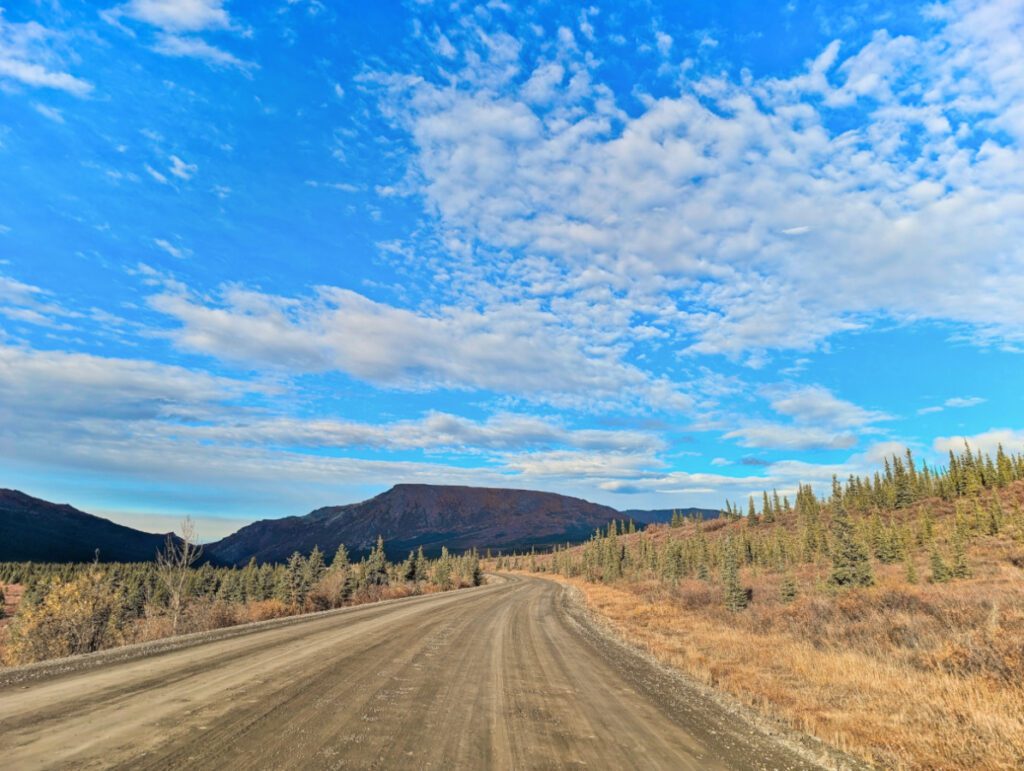
Guidelines for Off-Trail Tundra Hiking
So is it really just as easy as getting off the bus somewhere in the park and going for a walk through the tundra? Well, yes and no. Yes you can thoughtfully roam the tundra exploring and creating new memories, but you need to approach it with care and caution. Here’s the scoop on the guidelines for off-trail hiking in Denali National Park.
Safety and Communication
While I have done my share of off-trail hiking on my own, I always prefer to have another person with me and a small group really is best. When you’re hiking in the tundra, staying together or within a close visible distance is important. If you get separated, you should have a plan for how to get back together and how to stay safe. Also have a plan for communication if splitting up. In the event that you’re crossing a valley from the rest of your group or if you’re heading up a mountain, either mirrors or flags are great ways to get each other’s attention.
Emergency procedures and what to do if lost is a big part of safety when you’re hiking in the tundra or just off-trail in Denali. There are often rangers driving the Park Road, so establishing contact with park rangers through one or part of your hiking party while the others stay put is ideal for rescues if there’s been a problem. Hopefully you’ll never be in a situation like that, but you should have a plan in the event you do have a mishap and require assistance.
There are no required permits for backcountry hiking, but if you’re going to intentionally overnight you need to make sure you’re informing rangers of your plans and getting the appropriate permits or backcountry campground reservation. If you’re just heading out on your own, you can check in with friends or family before you head out. Here’s how to set up communication for the day:
- share your intended route including departure time and intended return time
- make sure your friend/family has the number for the Park office (907 683-9532)
- checking in with your contact person before AND after hikes
If you change your plan for the day once you’re in the park, be extra safe and still return at your intended time. You don’t want to cause any panic because of poor communication.
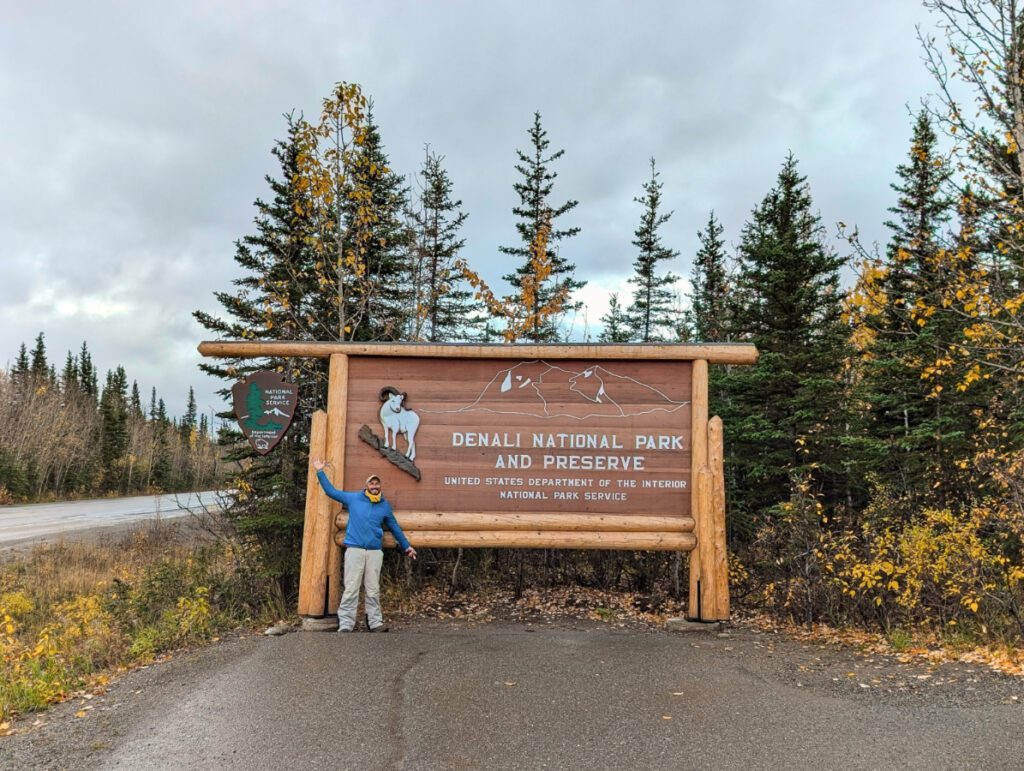
Environmental and Cultural Respect in Denali NP
Leave No Trace principles are extremely important when you’re off-trail hiking in the tundra. Respecting fragile tundra ecosystems needs to be at the front of your mind as you’re making your way through the wilderness, minimizing impact as you go. When you’re hiking out gently create a fresh path and follow alongside or nearby for your return. Multiple people on the same walking route will cause more damage than walking near one another.
Protecting tundra vegetation is as easy as leaving it be where it is and not intentionally squashing it down. Avoid fragile areas, staying on rock whenever possible, and minimize soil impact when you stop. You’ll come across squishy areas that you won’t want to stay in, and for your own safety, it’s good to plan your rests on firm ground. If you’re setting down your backpack, don’t hang a heavy bag on a delicate tree branch. FIRM GROUND!
Cultural sensitivity is the last part of being thoughtful when you’re exploring Denali National Park. Respecting indigenous land and understanding cultural significance means that you’re not intentionally damaging both the nature and any sort of artifacts you may find. You can and should honor Alaska Native sites you come across by not disturbing them or posing inappropriately in special places. Remember that you’re a guest here, on the ancestral lands of the Ahtna, Dena’ina, Koyukon, Upper Kuskokwim, and Tanana peoples.
Note: if you find any artifacts on federal lands, such as in Denali National Park, you do need to turn them over to the National Park Service for preservation, study and, in some cases exhibition.

Wildlife Awareness when You’re Off-Trail
I save the best for last because I feel that wildlife in Denali National Park is one of the biggest concerns of anyone planning to go off-trail hiking. Whether you’re trekking across the tundra or making your way through the thick trees of the taiga, you have excellent chances of coming across wildlife of all sorts. Understanding seasonal migrations, avoiding nesting areas, and keeping a safe distance when you encounter wildlife are all a part of being aware of your surroundings in Denali NP.
Ethical wildlife photography is another thing to consider. When you encounter wildlife, survey your surroundings to ensure you’re safe, then maintain your distance for photography without disturbing the wildlife. Observe whomever you’ve come across for a few minutes and then move on. It’s important that wildlife NOT become accustomed to human interactions or human presence.
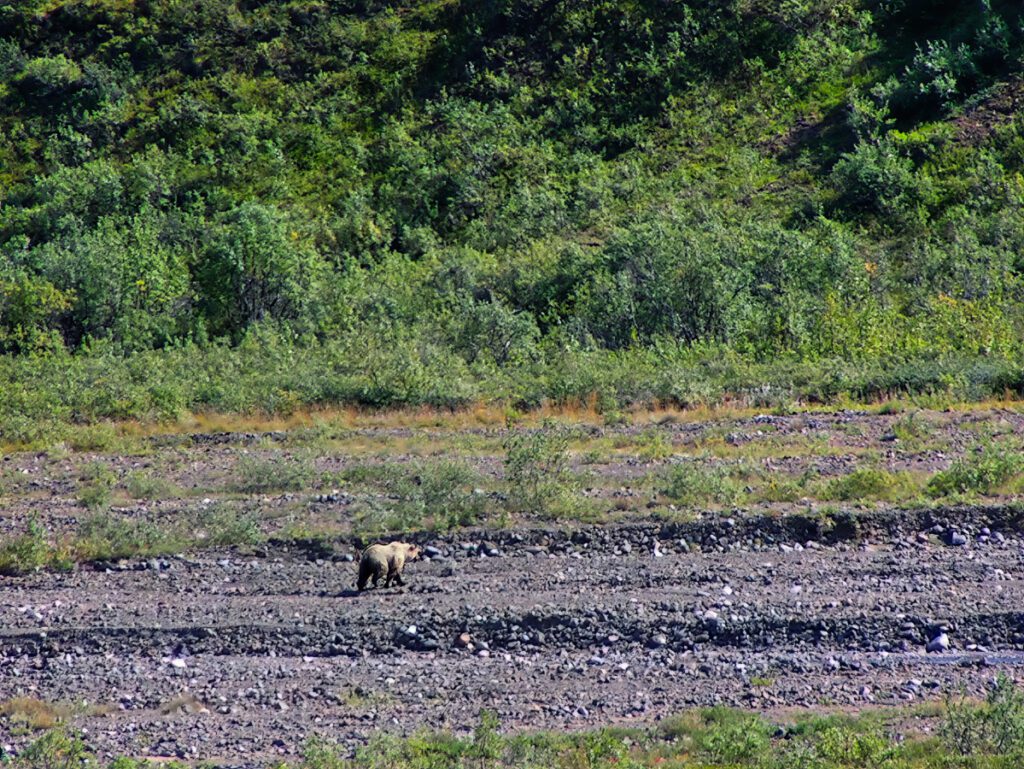
Bear Safety in Denali
An important part of bear safety when you’re off-trail in Denali is identifying bear signs. Keep your eyes peeled for fresh tracks, bear scat, animal carcasses and freshly torn up earth or trees. Bears don’t want to meet you, so making noise to avoid surprises is VERY important when you’re hiking in the tundra or taiga.
Proper use of bear spray is also important. I have NEVER had to use it and I’ve encountered many bears. If you’ve done your part to stay away from a bear and they are approaching you, making yourself ready with bear spray can be helpful. Bears’ behavior changes when they feel threatened, including charging at people, so watch for the signs. If you do have to use bear spray, be direct with your aim and DON’T get it in your own eyes.
TIP: if you’ve brought bear spray with you, YOU NEED TO LEARN HOW TO USE IT BEFORE YOU HEAD OUT. If you don’t know how to properly use it, the bear spray will do you no good and you’ll just end up getting hurt.
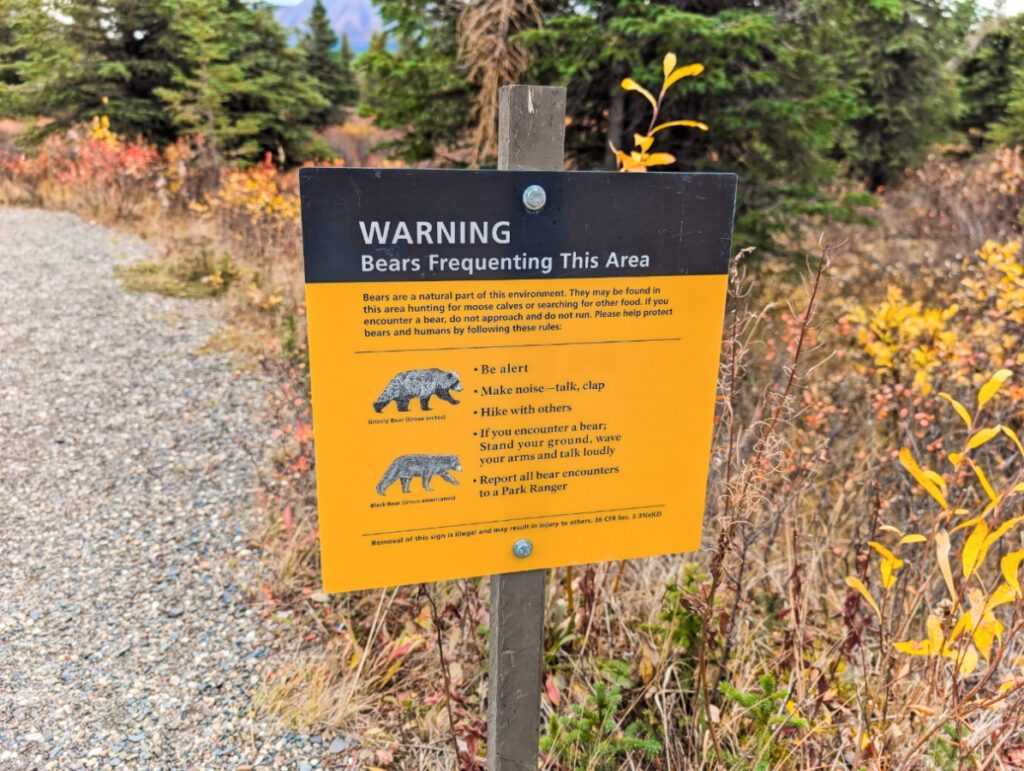
Moose Encounters
Keeping a safe distance from moose is the first step to staying safe when you see them. I’ve encountered moose up close and it’s a bit nerve-racking. If you’re watching a moose or several moose together, recognizing aggressive behaviors and deterring approaches are important to staying safe. Moose can kick or charge and neither of those situations is fun.
If you’re able to put a tree or large rock between you and an aggressive moose, that’s one of the best ways to stay safe. Should you for off-trail hiking in Denali and happen to startle a moose, back up quickly and keep your eyes on the animal. Put as much distance between you both as possible.
TIP: if you’re visiting Denali National Park at the end of summer/beginning of fall, this is peak moose rut season, so they may be extra aggressive. Be smart and distant!
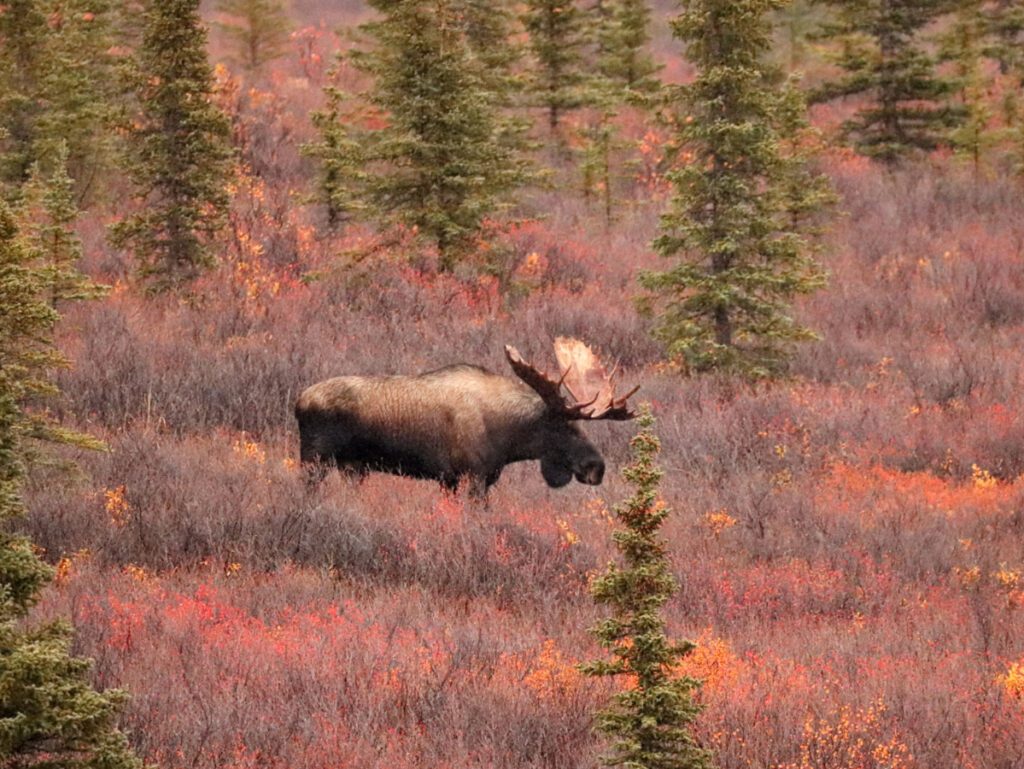
Other Wildlife to Watch for in Denali NP
I think it’s clear that whether you’re on a maintained trail or if you’re out in the tundra, the key to wildlife safety is keeping your distance. Depending on what sort of environment you’re in, you may encounter lots more wildlife than bear and moose. I’ve seen Dall sheep, caribou, wolves and even a lynx in Denali NP, In every case, staying back and knowing when to leave the situation has been the key to safety.
Also keep in mind the birds you’ll encounter in Denali. While they may not pose a safety problem for you, you may be a health and safety problem for them. Keep your distance from the many birds in the park, including the owls, willow ptarmigan, spruce grouse and more.
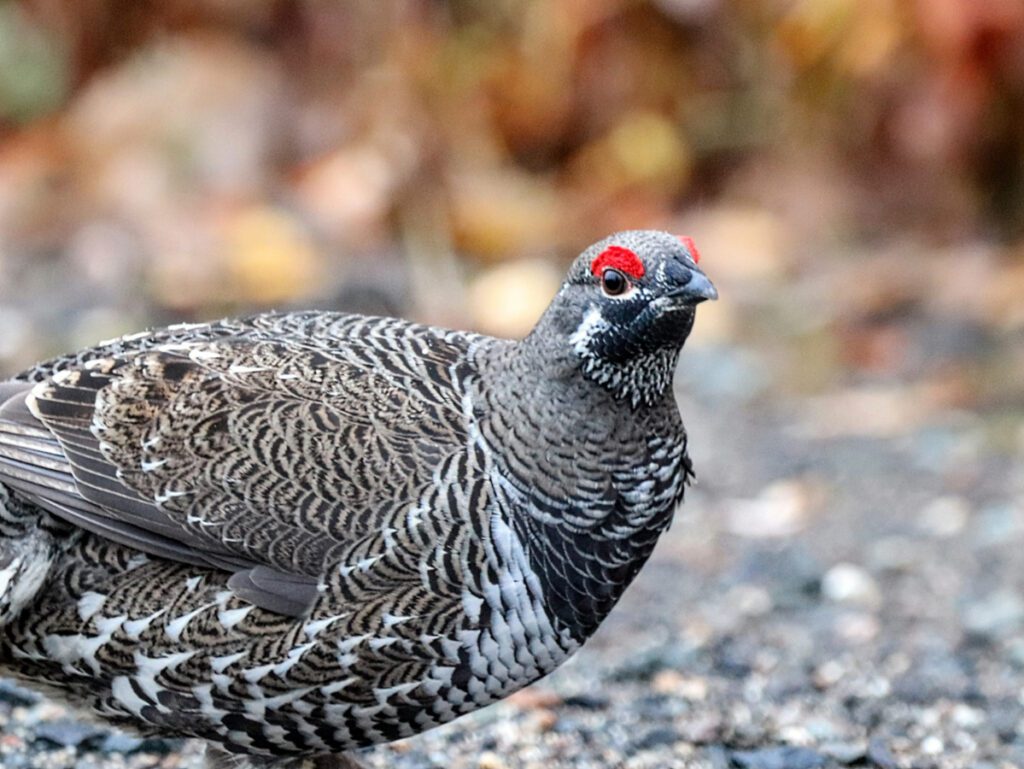
I hope you’re excited for hiking in Denali National Park. Off-trail exploring is such a special and unique experience and I know you’re love it too. It’s unforgettable. If you have any questions about visiting Denali, planning an Alaska road trip or need some specific recommendations, please leave a comment or send us a note. We’re always happy to help plan amazing Alaska adventures!
